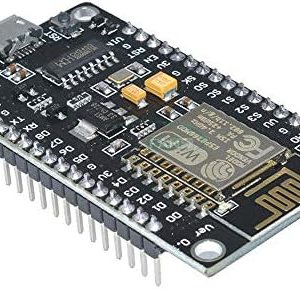Description: Step up DC to DC Converter, Touch Button Switch with display
A DC-DC buck converter is used to step down a higher voltage to a lower voltage with high efficiency. This particular module can take an input voltage and convert it to a lower, adjustable output voltage.
Key Features:
- Input Voltage (VIN): 4.5V to 32V
- Output Voltage (VOUT): 1.25V to 30V (adjustable)
- Output Current: Up to 3A (with heat sink, depending on input/output voltage and operating environment)
- Digital Display: Shows the output voltage for easy monitoring
Components:
- Input Terminals (VIN+ and VIN-): Located at the top left, these are used to connect the input voltage.
- Output Terminals (VOUT+ and VOUT-): Located at the bottom, these terminals provide the adjusted output voltage.
- Digital Display: Shows the output voltage in real-time.
- Inductor: The large coil in the center of the board, used for energy storage and smooth conversion.
- Capacitors: There are two visible capacitors labeled 220µF 35V and 100µF 50V, used for filtering and stabilizing the voltage.
- Potentiometer: The blue component with a screw at the top right (below the inductor), used to adjust the output voltage.
- Switching Regulator IC: This is the integrated circuit responsible for the voltage conversion process. It’s usually located under the heatsink or near the inductor.
Usage Instructions:
- Connecting Power:
- Connect the input voltage source to the VIN+ and VIN- terminals.
- Ensure the input voltage is within the specified range (4.5V to 32V).
- Adjusting Output Voltage:
- Use the potentiometer to adjust the output voltage. Turning the screw will increase or decrease the output voltage.
- The digital display will show the current output voltage.
- Connecting Load:
- Connect the device or load that requires the adjusted voltage to the VOUT+ and VOUT- terminals.
Applications:
- Power supply for DIY electronics projects
- Battery charging
- Voltage regulation for microcontrollers and sensors
- Providing stable voltage for LED strips or other components
Safety Notes:
- Ensure proper heat dissipation if operating at high currents.
- Double-check input and output connections to avoid short circuits or damage to the module.




